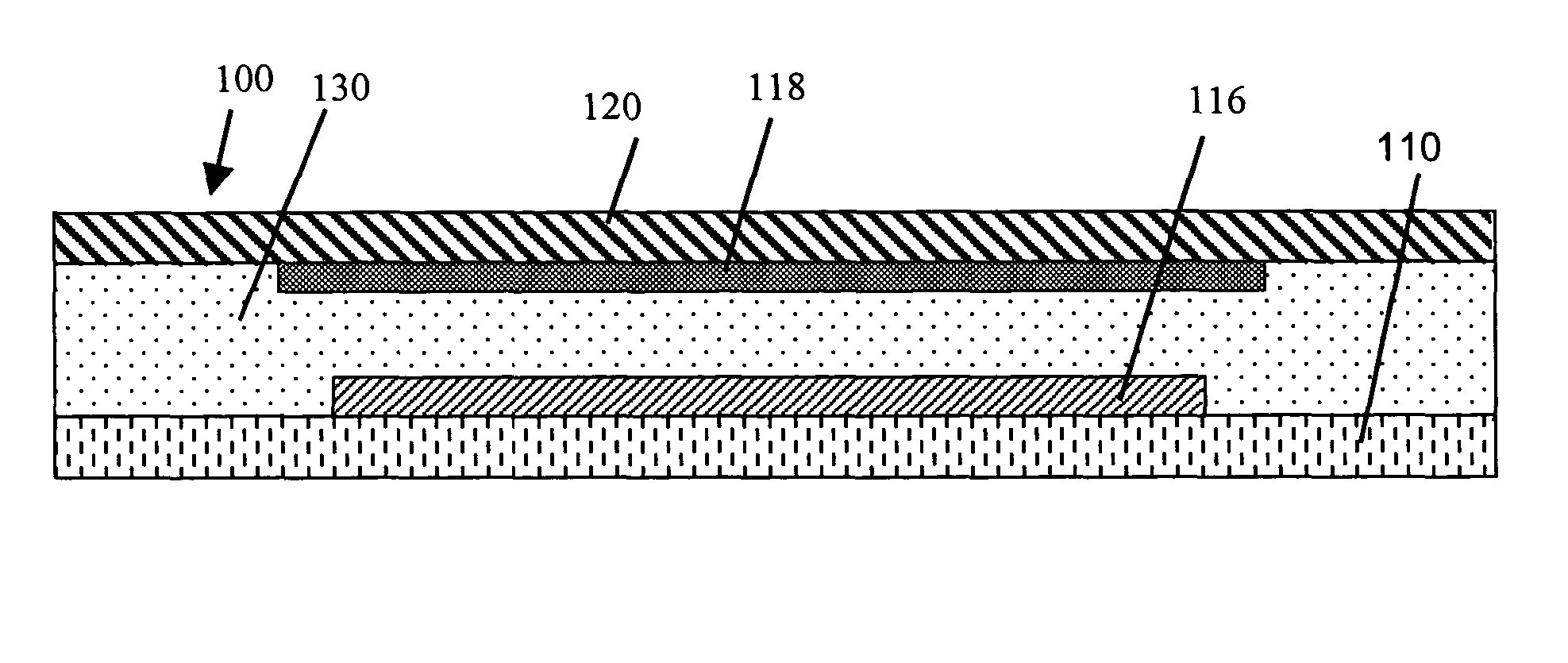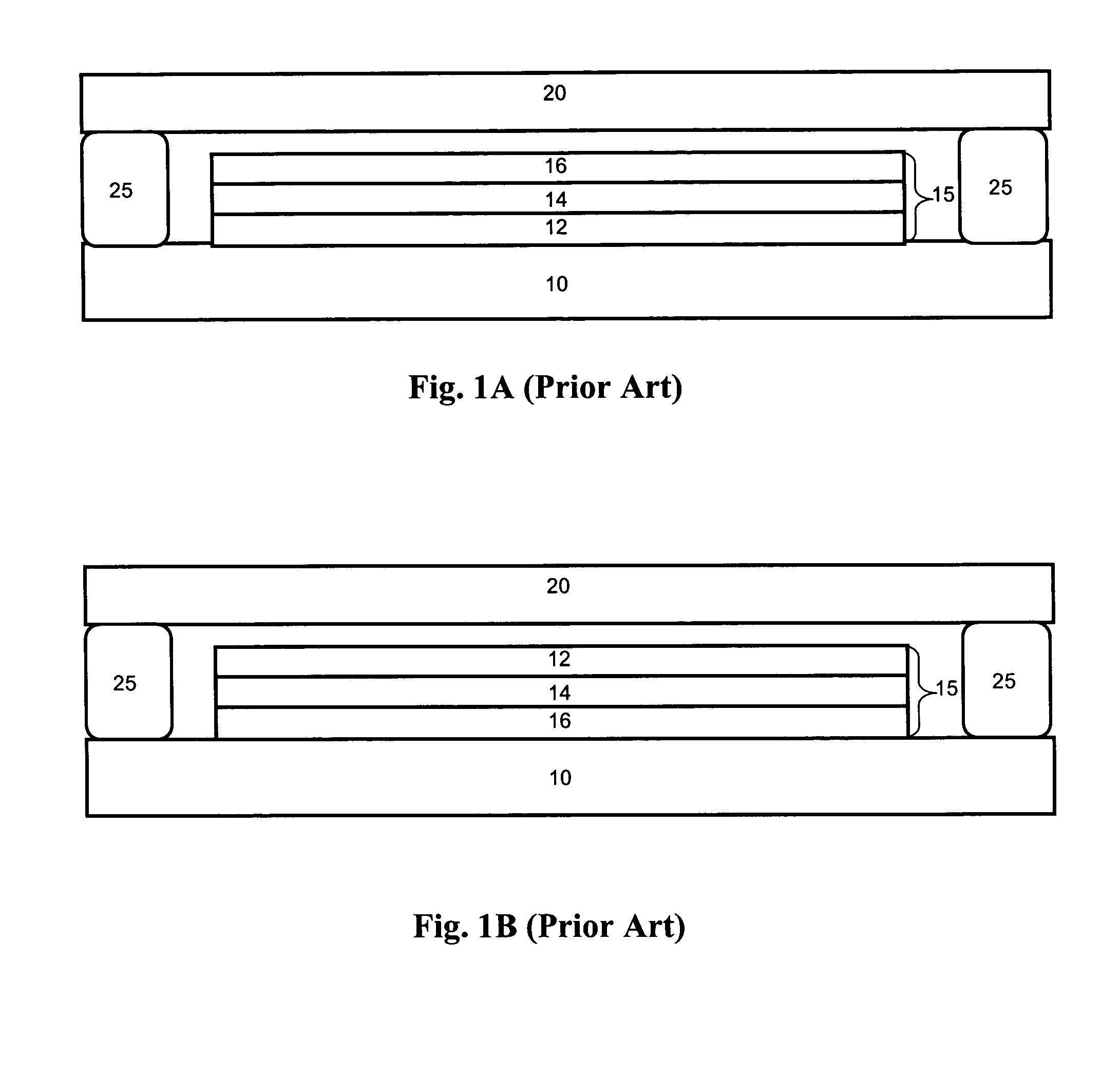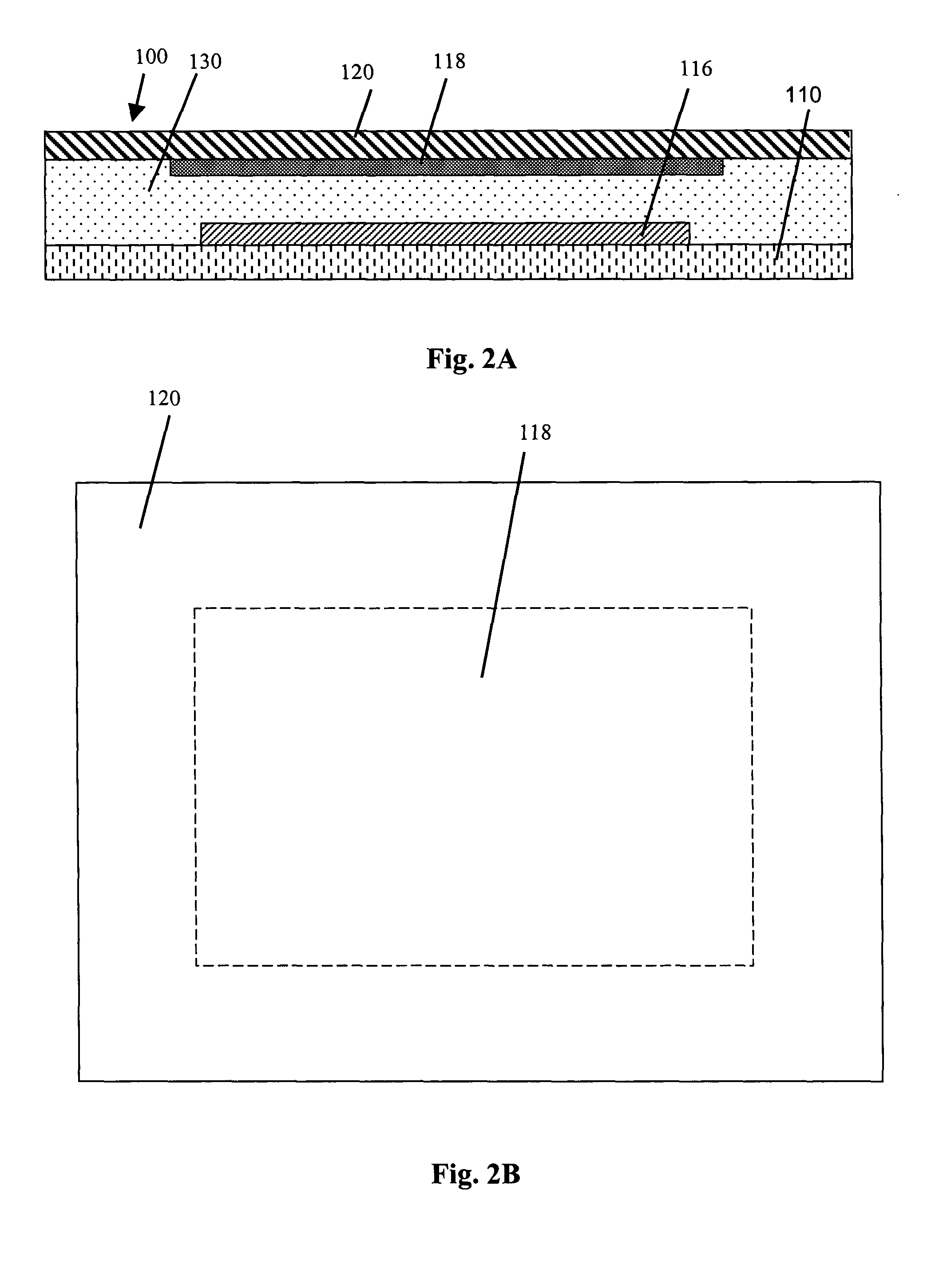Protected organic electronic device structures incorporating pressure sensitive adhesive and desiccant
a technology of organic electronic devices and desiccant, applied in the direction of thermoelectric devices, organic semiconductor devices, semiconductor/solid-state device details, etc., can solve the problems of limiting the lifetime of the device, reducing the service life of the device, so as to minimize the undesirable contact between the getter and the effect of damage to the organic electronic device region
- Summary
- Abstract
- Description
- Claims
- Application Information
AI Technical Summary
Benefits of technology
Problems solved by technology
Method used
Image
Examples
Embodiment Construction
[0033] The present invention now will be described more fully hereinafter with reference to the accompanying drawings in which preferred embodiments of the invention are shown. This invention may, however, be embodied in different forms and should not be construed as limited to the embodiments set forth herein. For example, although the embodiments below are directed to OLED structures, the techniques and structures of the present invention are applicable to other organic electronic device structures as well.
[0034] As used herein, a “layer” of a given material includes a region of that material where the thickness is small compared to both its length and width. Examples of layers include sheets, foils, films, laminations, coatings, and so forth. As used herein, a layer need not be planar, but can be bent, folded or otherwise contoured, for example, to at least partially, or even completely, envelop another component. As used herein, a layer can also include multiple sub-layers. As ...
PUM
 Login to View More
Login to View More Abstract
Description
Claims
Application Information
 Login to View More
Login to View More - R&D
- Intellectual Property
- Life Sciences
- Materials
- Tech Scout
- Unparalleled Data Quality
- Higher Quality Content
- 60% Fewer Hallucinations
Browse by: Latest US Patents, China's latest patents, Technical Efficacy Thesaurus, Application Domain, Technology Topic, Popular Technical Reports.
© 2025 PatSnap. All rights reserved.Legal|Privacy policy|Modern Slavery Act Transparency Statement|Sitemap|About US| Contact US: help@patsnap.com



